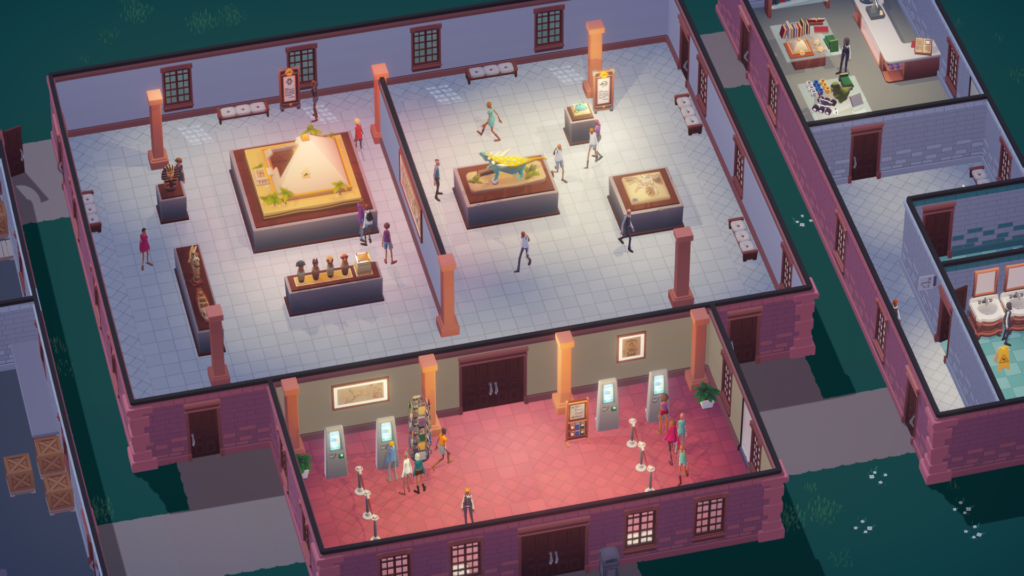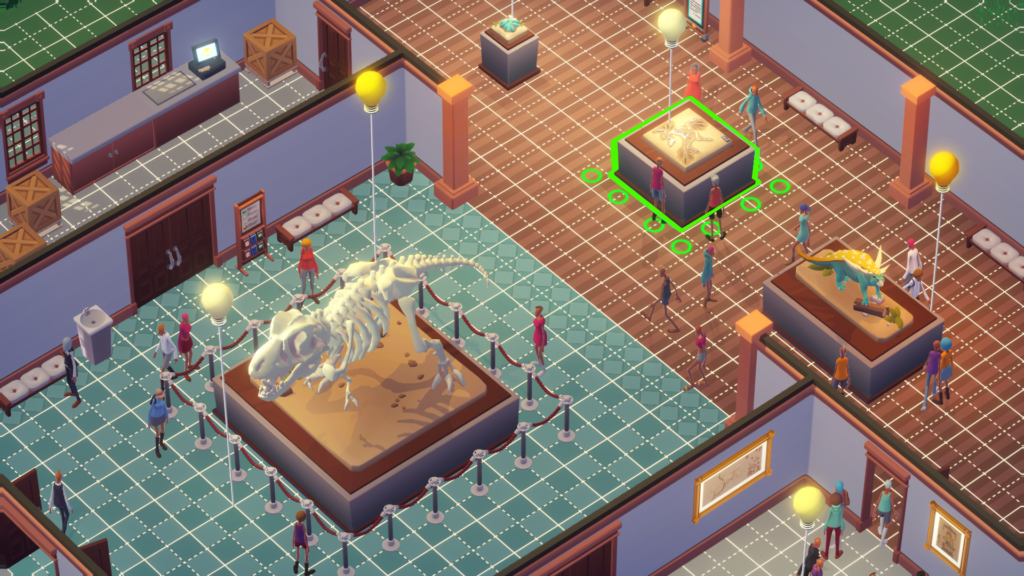Art World
Think You’d Make a Great Museum Director? A New Sims-Like Video Game Lets You to Build, Staff, and Run Your Very Own Museum
The game, which will be released next year, tasks players with building and curating their own institutions.

The game, which will be released next year, tasks players with building and curating their own institutions.

Taylor Dafoe

If you’ve ever stood inside a museum and wondered what it took to run the place, there’s a new video game that gives you a bit of an insight.
Mondo Museum, a simulation game out next year from Kitfox Games, will task players with building their own institutions, filling them with interesting things to see, and making sure the whole place runs smoothly. It’s like Sim City or Roller Coaster Tycoon—but for people who want to run the Met.
The game puts your management skills to the test. Can you run a place full of ancient treasures and artifacts that also appeals to a broad audience? It’s the kind of question museum directors and curators face each day, says Michel McBride-Charpentier, the designer and programmer behind the game.
“You have to find a balance between providing a little guidance for visitors and letting them express themselves in a completely open-ended way,” he says.
A longtime fan of management sims, McBride-Charpentier sat with the idea for the game for years before acquiring funding and starting production in January of this year. He anticipates that the simulator, which is still in development stages, will be available to the public by the spring.
Players will start out with a budget and the ability to design the layout of their museums, down to galleries, programming spaces, theaters, and even gift shops and restaurants. Then you have to find staff and hire conservators, researchers, and docents.
Success is quantified in two ways: money, which comes from ticket sales and gift shop revenue; and prestige, which is measured by visitor numbers and their experiences. These metrics feed each other: a prestigious museum will have high foot traffic, while a big-budget will give you more opportunities to please audiences.

A still from Mondo Museum. Courtesy of Kitfox Games.
“You’re not just placing down a prefabricated room of, say, the dinosaur exhibit hall,” McBride-Charpentier says. “You can name an exhibition hall anything you want, and put any item you want in there.”
Your fortunes are sure to rise and fall. Curating shows that draw meaningful connections between disparate collections—like a model of the solar system next to ancient Egyptian astronomical tools, the designer suggests—will earn you points. But providing too few benches for fatigued visitors will cost you. You can also obtain grants by winning curatorial challenges, such as creating a dinosaur exhibit that attracts 200 visitors a day.
Yet, by and large, the game is not about replicating the modern museum. Instead, it posits an alternative form of institution, one free from colonial histories, strict genre restraints, and underpaid labor.
In the world of Mondo, art is never purchased, and artifacts are never obtained through imperialism or theft; all historical objects live in institutions near to where they were created. So to grow your museum, you have to acquire loans from other institutions by impressing their directors with your prestige. Start to grow and you’ll be able to give a raise to your employees (all of them are unionized).
“I want to demonstrate what museums can and should be,” McBride-Charpentier says. “Rather than how they actually exist right now.”